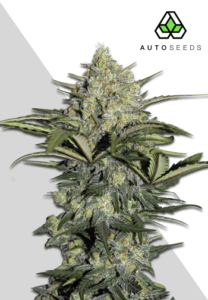
How tall do autoflowers get?
Autoflowers are more compact and faster than their photoperiod cousins, making them perfect for discreet and efficient cultivation. In this article, we’ll cover how tall they typically get, when either grown indoors or outdoors. We’ll also look at how pot size influences height and give you some great tips on how to manage the size of your plants’ in small spaces.
What is the average height of an autoflower?
The average height of a fully grown autoflower is typically between 2 to 4 feet. Autoflowering cannabis plants are almost always smaller than traditional photoperiod strains due to their genetics. These plants have evolved to flower automatically based on age rather than by responding to changing light cycles. Because they do not have an extended vegetative period, this often results in more compact growth. This shorter stature though, makes them ideal for indoor growing or discreet outdoor cultivation.
How tall do autoflowers grow indoors?
Autoflowers grown indoors usually reach around 1.5 to 3 feet in height. Indoor environments provide controlled conditions that mean you can optimize growth, but the limited space and distance from lighting can restrict the plant’s maximum height. Properly managed indoor grow spaces with good light, nutrients, and care can help autoflowers achieve their full potential without getting too big for your growing area.
How tall can autoflowers get outdoors?
When grown outdoors, autoflowers typically reach heights of 2 to 4 feet. The natural sunlight and open space allow these plants to grow taller than they would indoors. The environmental conditions, such as sunlight exposure and soil quality, can significantly influence their final height, but the genetics of the plant will be the main deciding factor. With ample sunlight, a good growing medium and balanced nutrients, autoflowers will thrive and reach their maximum potential outdoors.
What is the tallest autoflower?
The tallest autoflower is the Ultra Lemon Haze, which can grow as tall as 140 cm (about 4’6” feet). This strain is considered a semi-auto, meaning it retains more of the photoperiod parental genetics compared to many typical autoflowers. As a result, Ultra Lemon Haze will finish significantly taller. The benefit of its unique genetic blend will achieve impressive heights and more importantly yield, while still maintaining the autoflowering trait. This makes it a great choice for growers looking for a bigger autoflower variety.
Do autoflowers grow taller in bigger pots?
Autoflowers can definitely grow taller in bigger pots, if the other environmental factors are right. The larger root space allows for more significant root development, which in turn supports greater overall plant growth. Bigger pots and a larger root stock provide more room for nutrients and water, which in turn makes for bigger plants. It is essential to balance pot size with all the other growth factors like light, nutrients, and overall plant care if you really want tall and bushy crops.
What can you do to control the height of autoflowers in smaller spaces?

To control the height of autoflowers in smaller spaces, you can use Low-Stress Training (LST) techniques and ScrOG (Screen of Green) nets. The most common type of LST involves gently bending and tying down the branches to encourage lateral as well as vertical growth. ScrOG nets help by spreading out the plant’s canopy, ensuring even light distribution and keeping the plant’s height manageable. It also allows bud sites to penetrate the canopy giving better airflow which can be very useful in humid areas. These techniques allow you to maximize yield and manage the plant’s height effectively in confined spaces.
How much faster do autoflowers grow than feminized photoperiods?
Autoflowers grow significantly faster than feminized photoperiods, normally completing their lifecycle in 8 to 12 weeks from seed to harvest. In contrast, photoperiod plants usually take around 3 to 5 months to fully mature. This is because autos will automatically switch from vegetative to flowering after 3-5 weeks regardless of lighting, whereas photoperiods will stay in their veg period for anything up to 10 weeks until the length of the light per day shortens as summer draws on.
Autoflowers are ideal for growers looking for faster finishing strains that will still deliver a healthy yield. They are more manageable, especially if space is a factor and can be cultivated pretty much anywhere there is a reliable light source and a good growing medium.




